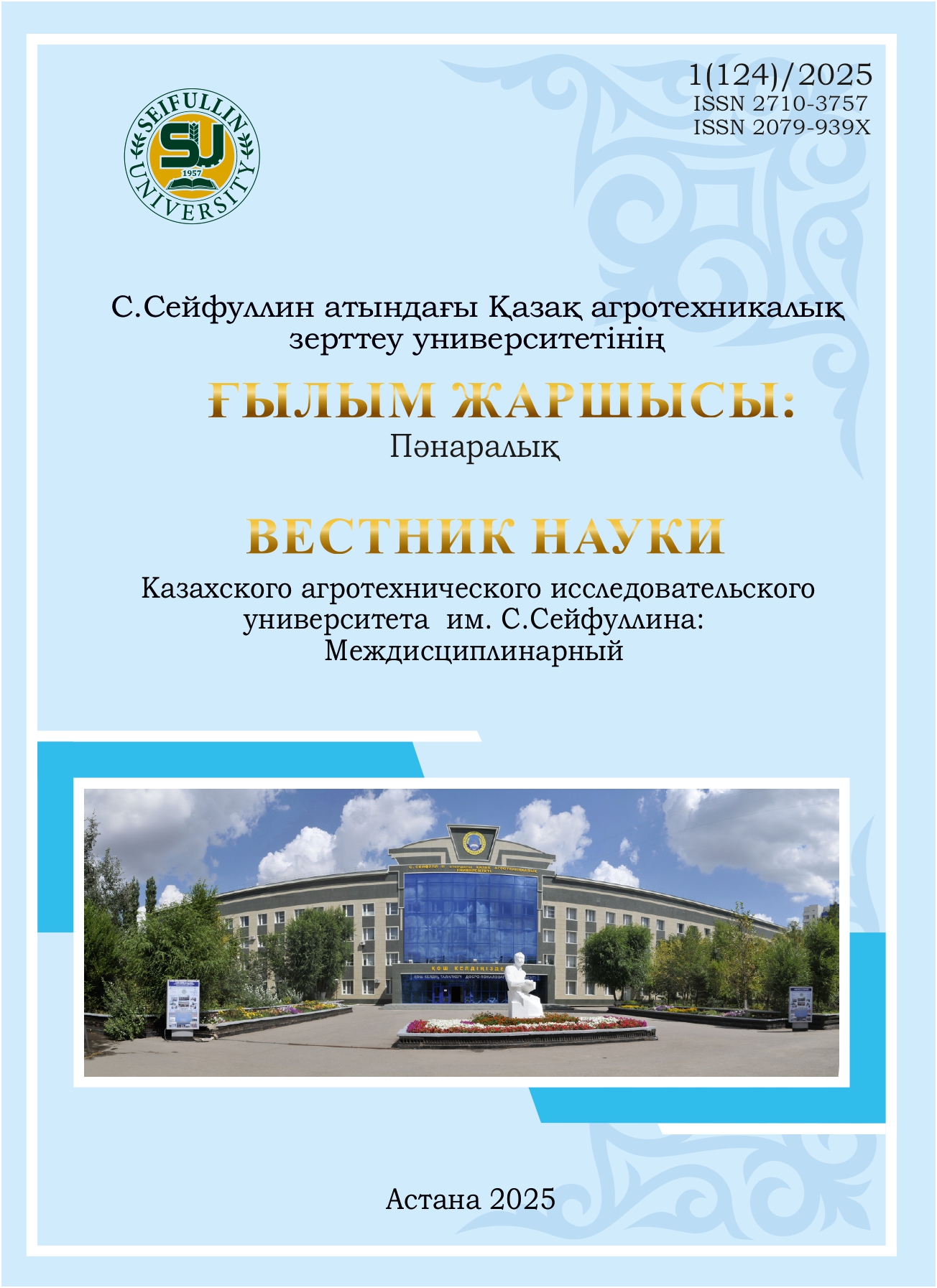Comparative analysis of the exterior and constitutional traits of ewes bred in the farms of Almaty region
DOI:
https://doi.org/10.51452/kazatu.2025.1(124).1867Keywords:
sheep breeding; Kazakh fine wool sheep breed; Kazakh meat-wool breed of sheep; constitutional parameters; exterior traits; body conformation indices.Abstract
Background and Aim. Evaluating the exterior and constitutional traits of ewes is essential for improving breeding practices and enhancing animal productivity. The aim of this study was to analyze the exterior traits and constitution of ewes bred on farms in the Almaty region of the Republic of Kazakhstan.
Materials and Methods. The study was conducted on ewes of Kazakh fine-wool breed, Kazakh meat-wool breed and non-purebred sheep. Body measurements including height at the withers and sacrum, diagonal body length, chest and pastern girth, and rump width were taken, and confor mation indices were calculated. The data were processed using biometric methods.
Results. The experimental ewes demonstrated good constitutional development based on height measurements (height at the withers and sacrum, as well as the oblique body length). In terms of measurements that characterize compactness of body structure and meat conformation (chest depth and width, chest and pastern girth, width at the rump), the animals corresponded to the desirable type. Overall, Kazakh meat-wool sheep of the desirable type are characterized by short stature, a large chest volume, rounded thighs, and broad withers and sacrum, indicating well-developed meat qualities.
Conclusion. The analysis of body measurements and conformation indices provides a comprehensive characterization of the animals' exterior and enables predictions about their offspring’s productivity. These findings can be applied to breeding programs aimed at improving the economi-cally significant traits of Kazakh fine wool and Kazakh meat-wool sheep breeds under the condi tions of the Almaty region.

